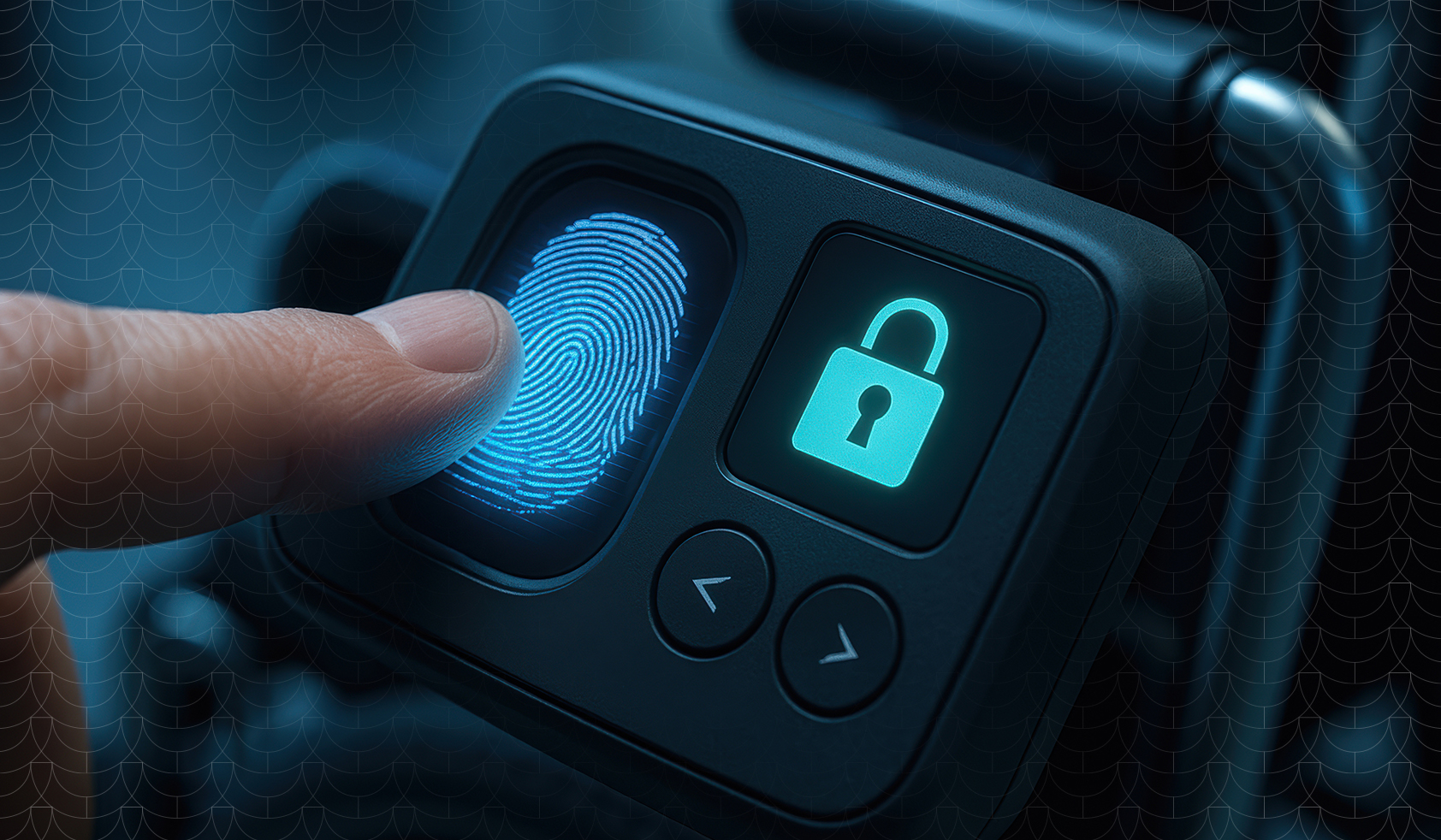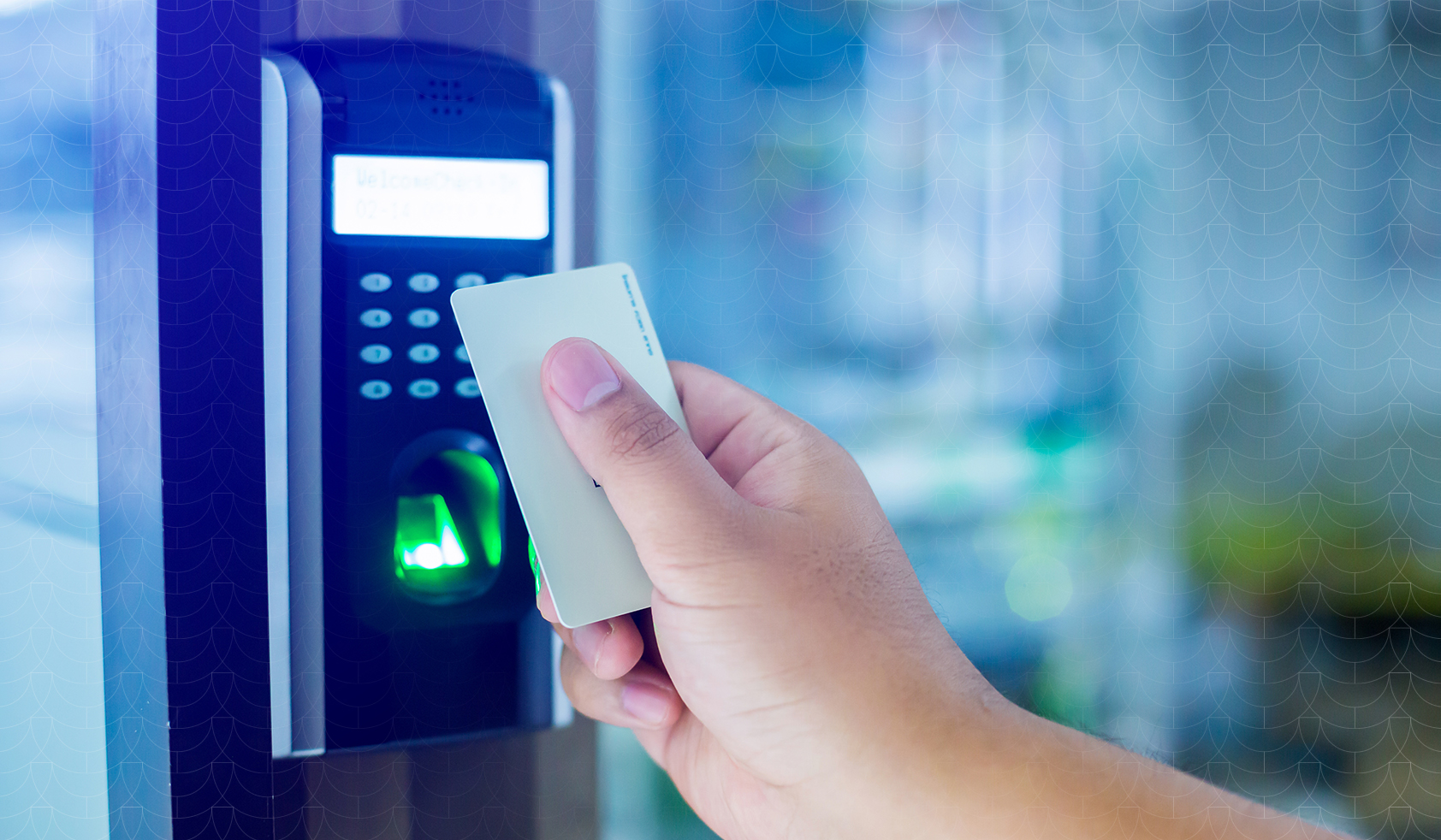Table of contents
- What is a door access control system?
- Why businesses need modern access control systems
- Types of door access control systems
- What makes a top tier modern commercial access control system?
- Why set up access control in your business?
- How to choose the right door access control system
- Get started with door access control
Keeping your workplace secure has never been more important - or more complex. From protecting data and assets to managing flexible workforces and meeting regulatory requirements, businesses need more than just locks and keys. They need intelligent, connected systems that provide security without slowing people down.
In this guide, we’ll walk you through everything you need to know about door access control systems for business. It covers how these systems work, the types available, the features to look for, and how to choose the right solution based on your organization’s size, goals, and setup.
What is a door access control system?
A door access control system allows businesses to control who can enter specific areas, when they can enter, and how that access is recorded and managed. Instead of relying on physical keys, these systems use electronic credentials (such as keycards, PIN codes, biometrics, or smartphones) to verify identity and unlock doors.
Modern access control systems also log all access events in real time and can be managed remotely through web or mobile dashboards. This not only improves physical security but also supports compliance and operational efficiency.
Read more: Cloud vs on-premise security: Which is right for you?
Why businesses need modern access control systems
Traditional locks and keys don’t meet the needs of modern workplaces. Keys can be copied, lost, or stolen. They offer no way to monitor or restrict who’s accessing your spaces. In contrast, a digital access control system gives you complete oversight and control.
Modern systems help you:
- Protect sensitive areas like server rooms, labs, or executive offices
- Limit access based on roles or schedules
- Track entry in real time with digital logs and alerts
- Reduce operational risk by removing access instantly when needed
- Improve visitor management and third-party access workflows
- Support compliance with industry standards and data protection laws
From coworking spaces to corporate headquarters, these systems help you secure people, property, and information.
Read more: What is Access Control? The Complete Guide 2025
Types of door access control systems
There are several types of access control systems, each suited to different environments and business needs:
Keycard and key fob systems
Users swipe or tap a card or fob against a reader. These systems are widely used and easy to manage, but cards can be lost or shared.
Keypad and PIN systems
Access is granted when a user enters the correct code. These are cost-effective but less secure unless codes are updated regularly.
Biometric systems
Use fingerprint or facial recognition to verify identity. This offers strong security and convenience but may raise privacy or cost concerns.
Smartphone-based systems
Allow users to unlock doors using mobile apps or Bluetooth. These are increasingly popular for their ease of use and ability to support touchless entry.
Networked on-premise systems
Operate from a local server managed by the organization. These offer control but can be complex and costly to maintain.
Cloud-based access control systems
Store credentials, permissions, and logs securely in the cloud. These allow remote management, automatic updates, and easy integration with other business systems.
Read more: The 6 best cloud-based access control systems in 2025
What makes a top tier modern door access control system?
The best systems combine reliable hardware with flexible, cloud-based software. Here are the components and capabilities to look for:
Credential readers
These devices identify users by reading their card, PIN, biometric data, or smartphone signal.
Electronic door locks
Once credentials are verified, the system releases the lock (either magnetic or electric strike) on the door.
Access control panel
Acts as the hub for managing credentials and verifying access. In cloud systems, this is handled remotely.
Management dashboard
Admins use a web or mobile interface to issue credentials, set rules, monitor activity, and run reports.
Real-time alerts and logs
Security teams can see who accessed what, when - and get alerts for unauthorized attempts or system issues.
Integration with other systems
Modern platforms integrate with video surveillance, visitor management, HR systems, and building automation tools.
Why set up access control in your business?
A modern access control system does more than stop unauthorized entry. It supports efficiency, compliance, and peace of mind. Key benefits include:
- Real-time visibility and control from any device
- Customizable access by user, team, or location
- Instant credential changes when someone joins or leaves
- Better visitor handling with pre-authorized or temporary passes
- Audit-ready data logs to support compliance with GDPR, HIPAA, or ISO standards
- Improved employee experience through faster, touchless entry
How to choose the right door access control system
Choosing a system depends on your business size, industry, and security priorities. Here are some key factors to guide your decision:
- What are your critical security zones? Think about areas that need extra protection.
- How many users or sites do you manage? Scalability is key.
- Do you need mobile access or touchless entry? Not all systems support these features.
- Will it integrate with your existing tools? Check for compatibility with your HR, video, or visitor systems.
- How much admin time will it take? Cloud-based systems reduce the IT burden.
- What’s your budget? Consider both upfront and long-term costs.
If you want to avoid complex installations and legacy infrastructure, a cloud-based system offers the most flexibility and ease of use.
Why choose acre Security for your access control needs
Access control is a core part of business security and operations. A well-designed system helps you protect your people and property, simplify admin tasks, and meet growing compliance demands.
Whether you’re upgrading from legacy hardware or starting fresh, acre Security offers the tools and expertise to build a smarter, more secure future for your business.
acre Security offers one of the most complete and future-ready access control platforms on the market. Built for speed, reliability, and ease of use, it helps businesses manage access, monitor activity, and secure both people and property from a single, intuitive platform.
Built on Amazon Web Services, acre is cloud-native, meaning there are no servers to maintain, and businesses can get up and running quickly. The system supports mobile credentials, biometrics, and role-based access, with real-time alerts and analytics included. It connects with over 50 other systems, from video and intrusion to HR and identity platforms.
Whether you're securing a single building or a global portfolio, acre’s platform is designed to scale. It’s trusted by organizations in education, healthcare, commercial real estate, and critical infrastructure. And because compliance is baked in, it helps businesses meet GDPR, SOC 2, and other regulatory requirements with confidence.
Join the many organizations that protect their people with acre. Discover acre’s full access control suite. Or, speak to an access expert.
Door access control systems FAQs
How much does a commercial door access control system cost?
Costs vary widely based on system type, building size, and features. Basic systems can start around £1,000 per door, while more advanced or integrated systems may cost more.
What is the best type of access control system for a small business?
For most small businesses, cloud-based systems with mobile or card access offer a good balance of security, affordability, and ease of use.
Can access control systems be integrated with other security tools?
Yes. Leading systems like acre integrate with video surveillance, visitor management, HR platforms, and alarms.
What happens if the power or internet goes out?
Systems like acre’s include offline functionality and backup options to ensure access continues even during outages.





